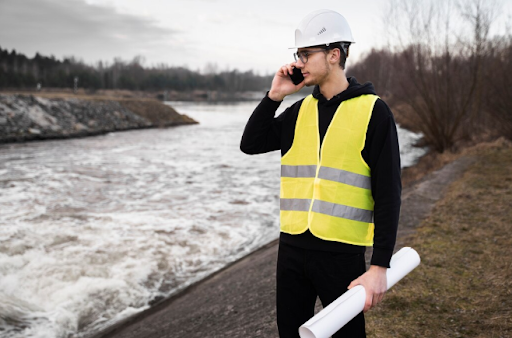Precise lake surveys are the essential step for a successful hydrographic plan because they can provide important information for safe navigation, impact studies, environmental protection, and water management. Therefore, accurate lake surveys ensure that planners always have up-to-date information about the lake that matches their data requests for long-term water-based infrastructure or conservation projects. In this guide, we have discussed how accurate lake surveying helps in hydrographic projects. Let’s delve into it:
1. Provides Safety of Navigation and Planning of Infrastructure
The accuracy of lake surveying is core to constructing safe and viable navigation routes and new infrastructure designs.
- Identify underwater hazards such as boulders, wrecks, dangerous depth changes, etc.
- Allow a boat or watercraft to safely navigate away from hazards by establishing navigation channels.
- Provide details for planning docks, bridges, and dams based on identifiable depths and contours, minimizing errors or failures of marine structures.
- Help improve emergency response capabilities if an incident occurs.
These findings not only prevent marine accidents, they enhance efficiency in waterway infrastructure and moderate the impact of new infrastructure on the current condition of the lake.
2. Facilitates Environmental Monitoring and Protection
Hydrographic surveys assist in protecting the ecological stability of lakes and wetlands by contributing to conservation efforts.
- Tracks sediment buildup and pollution accumulation over time.
- Maps aquatic vegetation and habitats to protect wildlife.
- Monitors shoreline erosion and geologic change.
- Provides a baseline for habitat restoration efforts.
- Regular monitoring facilitates the enforcement of environmental regulations.
When environmental scientists have precise surveys to work with, they can make informed decisions on measures to support biodiversity and rehabilitate degraded areas.
3. Promotes more effective Water Resource Management
The sustainable management of water resources depends on lake surveying.
- Provides information for irrigation and municipal water bodies planning.
- Supports flood control and drought preparedness efforts.
- Contributes to forecasting models for seasonal water availability.
- Increases understanding of hydrologic behavior across watershed landscapes.
By providing insights into lake dynamics, careful surveying helps authorities to manage water fairly, balancing the demands of society and ecosystems.
4. Enhances Data Accuracy for Engineering and Construction
Engineering projects adjacent to lakes rely on hydrographic data for accuracy.
- Avoids design errors due to outdated or incorrect bathymetric maps.
- Provides useful information for geotechnical investigations and sediment load.
- Facilitates the design of underwater foundations.
- Helps determine the extent of dredging and the disposal of sediment.
- Provides regulators with verified information.
Reliable survey data reduces risk to construction, improves efficiency, and ultimately ensures long-lasting performance by incorporating actual underwater conditions.
5. Provides a Reference Case for Long-Term Monitoring and Research
Accurate lake surveys create datasets that are integral for scientific and policy purposes.
- Provides a benchmark for tracking changes over decades.
- Helps the scientific community study how climate change might affect water bodies.
- Provides regulators with information for lake zoning
- Allows for comparison of old lakebed profiles with new lakebed profiles.
- Provides a framework for simulation and prediction models.
The datasets from lake surveys create a base of knowledge that enables multidisciplinary research, more informed forecasting, and sustainable water governance.

